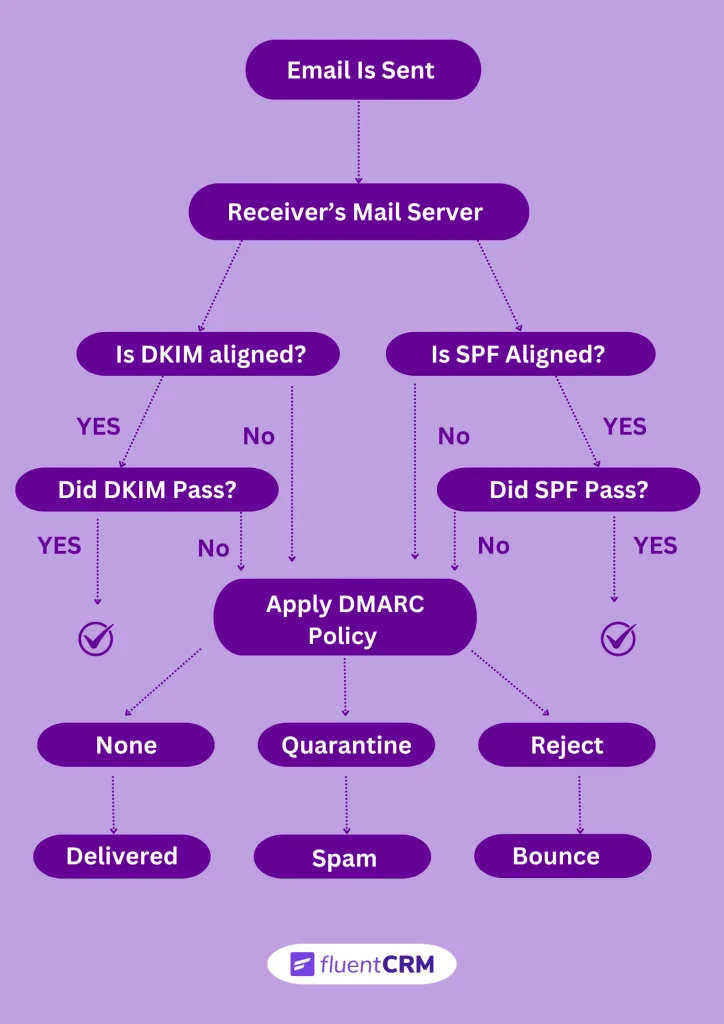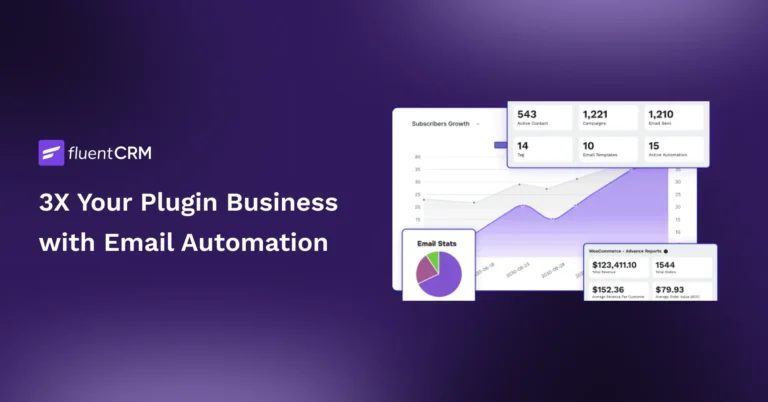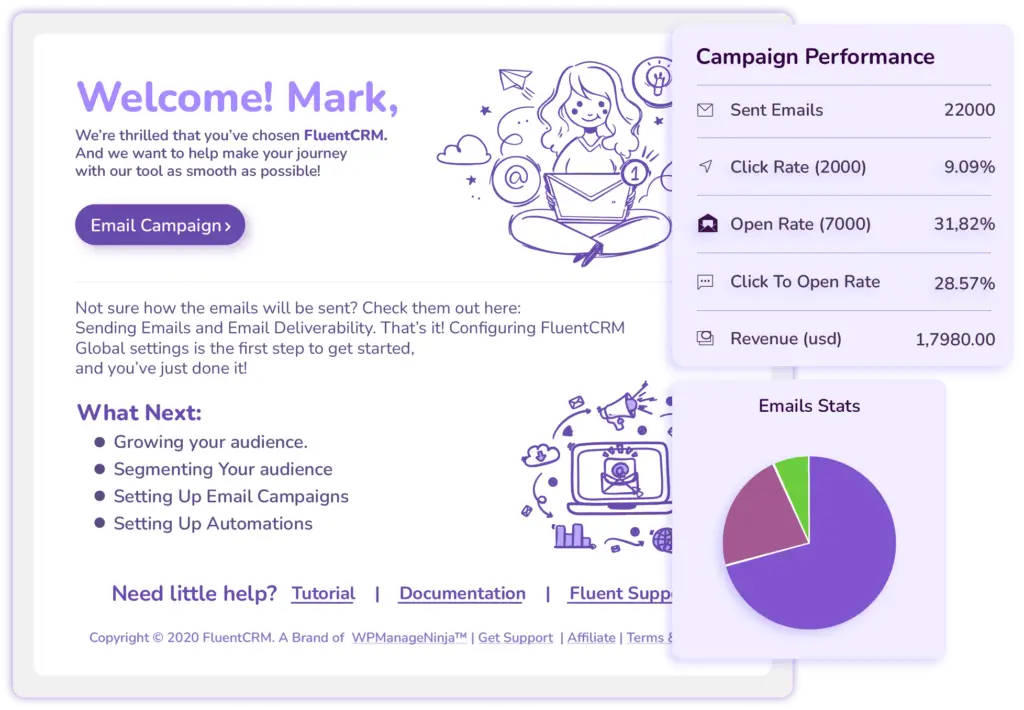
WordPress Not Sending Emails? Try These 5 Easy Fixes!
Didn’t it feel like a nightmare when your WordPress site failed to send emails?
You’re not the only one. We saw many site owners report on WordPress troubleshooting forums, Reddit, or via support ticket with the same queries: “My WordPress not sending emails correctly.”
Moreover, we also encountered a similar problem when we first tried to send emails using WordPress’s default PHP mail() function.
Although the underlying problem is technical and can be fixed immediately, by the time we identified it, it had already cost us missed leads, lost sales, and poor customer communication.
If you are encountering a similar WordPress emails not sending issue, then go through the article to find out the ways to resolve the issue on your own.
Why WordPress Isn’t Sending Emails? (Common Causes)
WordPress not sending emails is a common and frustrating issue for website owners. There could be several reasons WordPress email fails to send; the major cause lies with the default mail function.
Here are the main issues and why they occur:
Incorrect Email Configuration in WordPress
WordPress not sending emails could start due to basic problems.
It may occur if you put an incorrect “From” email address in your WordPress email settings or within your contact form plugin. If your given address doesn’t match your domain, it can lead to delivery issues.

Server Side Error & Lack of Authentication
Technically, the WordPress server is not designed to send emails. The wp_mail() function is responsible for sending emails straight from WordPress. The function relies typically on PHP mail() function (your web server’s default mail function) to send it.
The major drawbacks of using the default mail function are: The PHP mail() function itself is a low-level, unauthenticated method for sending emails.
$mail_sent = mail($to, $subject, $message, $headers);As for the email authentication, the PHP mail() function doesn’t handle any authentication method, such as SPF, DKIM, or DMARC.
And lack of authentication doesn’t ensure that the sender is legitimate or authorized to send mail from a specific domain.
Emails Flagged as Spam
Email providers like Gmail, Outlook, and Yahoo don’t tolerate any form of spam emails. Without proper authentication, sending emails means your emails are being exposed to being flagged as spam by many email providers.
If emails are sent without SPF, DKIM, and DMARC records or contain any spam trigger words, the spam filters will consider emails as spam since they fail to verify the email sender’s domain legitimacy.
So, before making any major changes to your email configuration, identify whether your emails are landing in the client’s spam folder or not.
Email Spoofing by Contact Form Plugin
Email spoofing is modifying the “From” address of an email to make it appear as if it is sent from a different source. This is possible when you work with the default PHP mail() function.
Many contact form plugins are configured to automatically use the visitor’s entered email address in the “From” field. Since your website’s server is not authorized to send emails on behalf of that visitor’s email provider, mail clients immediately detect this mismatch and flag the email as a suspicious spoof.

If your contact form replaces the sender address with the user’s email, there is a high chance the email will be marked as spam.
Lack of SMTP Server & Plugin Conflict
SMTP (Simple Mail Transfer Protocol) is the standard protocol designed for sending emails between email servers and email clients.
Without an SMTP server, email providers will identify the sent email as coming from an unauthorized IP address (your web server) and flag the email as spam. Also, you will have no access to email logs to identify any delivery issues.
Additionally, if your WordPress site utilizes multiple active plugins to manage email sending, it’s possible for them to interfere with each other’s functionality.
How to Identify the WordPress Email Not Sending Issue?
Now you know the reasons why your WordPress email is not sent to your recipient’s inbox.
Before moving on to the quick fix, first things first — you need to identify whether your emails are actually getting sent or not.
Assuming you aren’t using any email marketing plugin or SMTP server, there’s a simple way to identify this issue.
“Check & Log Email” is a free email testing tool that allows you to send test emails. If you’re using a default mail() function, then with check email, you can easily diagnose whether your emails are sent to the receiving end.

After installing the plugin in your WordPress dashboard, go to Check & Log Email > Go to Email Testing Module
Enter your personal email address and send a test email.

The portal will immediately show a confirmation message that the default main() function initiated the email sending process with the headers containing important metadata.

Now, if you receive the test email similar to the image containing the subject line: “Test email from [https://yourdomain.com].”

Note: Do not forget to check the spam folder.
If the test runs perfectly, it means there is likely no fundamental WordPress email sending issue to be fixed. Also,
- The PHP mail() is functioning perfectly
- There isn’t any existing plugin conflict
- Your web server’s IP is not blacklisted by email providers
If you are already a FluentCRM or FluentSMTP user, then you can send test emails from both these plugins. Moreover, in FluentSMTP, you can check the detailed email logs as well.
5 Quick Fixes to WordPress Not Sending Emails
As mentioned above, WordPress Not Sending Emails could happen for several reasons. Whatever the causes are, the good news is that they can be solved by following a few steps.
Below, we have shared some quick fixes you could apply to find a solution.
Check Your Email Settings in WordPress Dashboard
You might be ready to break your bank to resolve this issue, when the problem is just a typographic error or a wrong email address in your WordPress dashboard.
It’s the quickest possible fix you might not have considered.
Go to your WordPress dashboard Settings → General.
Did you put the wrong Administration Email Address?
If so, then enter the correct address, and then try sending a test mail to check.
Set Up SMTP for Reliable Email Delivery
If your WordPress is not sending emails even after putting the correct email address, then it’s better to set up an SMTP server.
The major advantage of using an SMTP server (like FluentSMTP) is the proper authentication process, and (most importantly) it won’t cost you an extra penny because FluentSMTP is a forever-free plugin.

When you set up the SMTP server, you will need to add a valid SMTP Host, username, and password.
After configuring, when you send emails, the email service providers will identify that you are authorized to send emails.
And, the best part is: If an email fails to deliver, the SMTP server will generate a “bounce” response to notify.
How to set it up? Let’s break it down in a step-by-step process:
Install FluentSMTP
FluentSMTP is the reliable option to send emails. It helps you find an alternative route by excluding the PHP mail function’s restrictions and bypassing spam-triggering filters imposed by email service providers, so your emails land perfectly in the recipient’s inbox.
First, you need to do the following: WordPress dashboard → Add Plugin
Once you’re there, search for FluentSMTP, install it, and activate it.

Select Mailer & Configure Sender Details
After activation, head to the settings in the WordPress dashboard, and you’ll see FluentSMTP in the dropdown menu.
The setup panel will appear, showing numerous email service providers; you must select your desired service provider.
The setup process is straightforward — once you’ve selected, you’ll need to provide a From Email and From Name for each provider. When you send emails, your receiver will see the given email and name in their inbox.

After that, check below for API Settings. For most email providers, you need to give an API Key to start using the service. Once you sign up to the mailer service, it provides you with an API key to set up your SMTP server.

If you select Other SMTP, then you can configure your desired email service provider on your own if they are not listed at the top.
The process is slightly different, as you need to provide a few additional details to set it up.

We will break down the process here:
- SMTP Host: This is the hostname or IP address of the outgoing mail server. It’s often in the format smtp.yourdomain.com
- SMTP Port: This is the specific network port your SMTP server needs to use to submit mail. Common SMTP ports are: 465, 587, 25
- SMTP Username: This is the username required to log in to the SMTP server.
- SMTP Password: This is the password for the SMTP username.
- SMTP Authentication: It enables or disables the process of sending your username and password to the server.
Find the SMTP configuration credentials you’ll need to set up the most popular email providers:
Setting | Gmail Workspace | Hotmail / Outlook.com | Yahoo Mail |
SMTP Host | smtp.gmail.com | smtp-mail.outlook.com | smtp.mail.yahoo.com |
Encryption Type | TLS (recommended) or SSL | STARTTLS (recommended) or SSL | SSL (recommended) |
SMTP Port | 587 (for TLS/STARTTLS) or 465 (for SSL) | 587 (for STARTTLS) or 465 (for SSL) | 465 (for SSL) or 587 (for STARTTLS/TLS) |
SMTP Authentication | Yes | Yes | Yes |
SMTP Username | Gmail Email Address | Hotmail Email Address | Yahoo Mail email address |
SMTP Password | App Password (Generated in Google Account security settings) | Your regular password, or an App Password if using 2FA | App Password (Generated in Yahoo Account security settings) |
For demonstration purposes, let’s show you how to configure Google App Password to use it as an SMTP Password.
#Step 1: Manage Your Google Account → Security
#Step 2: Enable 2F Verification

#Step 3: Search App Password
#Step 4: Give an app name such as: New SMTP → Create

#Step 5: They will create a password that will be displayed once, so note it down and paste it into the SMTP password. This will serve as your Google/Gmail SMTP password.

Send Test Email
When you are done with the FluentSMTP configuration and you’re set to send emails, then it’s time to try sending a test email to ensure that everything is working perfectly.
Go to FluentSMTP → Email Test, give a From and Send to email address, and send the test email.

If everything is configured correctly, the test email will be sent successfully, and you’ll receive a confirmation prompt.
Also, you can check “Email Logs” to verify whether your sent/ scheduled emails are sent or not.

Configure a Contact Form Plugin
Contact forms are typically used for lead generation. It is a great way to collect leads that you can nurture via email marketing tools.
Whenever someone submits a form, the contact form plugins are designed to send an automated email notification to your designated address.
If you have configured your contact form to work similarly and are facing issues with receiving emails, then it’s likely that you need to check and reconfigure your form plugin’s email settings.
If you are a FluentForm user and have enabled Admin Email Notifications, then you need to check your designated form email notification setting.

Check whether the send-to email address is correct or not. If not, then use the correct address to receive email.

Also, you need to go through a similar process if you are using the commonly known free form builder plugin “Contact Form 7”. Go to the form’s edit panel, then head to the mail tab.
Check that the From and To email addresses are the same as your site’s domain name. Make sure the addresses are written in correct syntax.

Prevent Emails From Going to Spam
Even if everything is configured correctly, one of the major concerns could be the risk of your emails potentially getting flagged as spam.
With default WordPress email settings, email providers such as Gmail, Outlook, or Yahoo fail to find any legitimacy of email sending of the sending server due to a lack of authentication or protocol.
So, the only possible solution that we discussed before is using an SMTP server. Along with that, abiding by the new email deliverability rules can be a beneficial solution.
A few more things could also prevent your emails from going to spam. They are:
Whitelist the Email Address
Email whitelisting is the process of asking your contact to keep your emails listed in their safe contact list. It will prevent your emails from landing in the spam folder. It’s more like your client saying to the email provider, “I trust this sender, always deliver their messages to my inbox.”
On Gmail, the process of whitelisting is quite simple; your contacts just need to move their emails from spam to the inbox. This way, any further emails won’t be flagged as spam by the email service provider.
Note: This action is fully reliant on the client side, so it can not be considered as the universal solution for your site’s overall email deliverability.
Use a Safer Email Address
Using a professional email address is always a safer option when you’re running a business. It builds brand credibility and trust.
The domain of the email address must match the domain of your website. As discussed above, when the email address doesn’t match your domain, it might seem like a spoofed email.

Additionally, you need to make your emails spam-free by avoiding spammy words and phrases in the email body, subject line, and preview text. This way, you will maintain a good email sender reputation that will potentially avoid your emails from being flagged as spam.
Set Up Email Authentication (SPF, DKIM, DMARC)
The best way to make your emails land in your recipient’s inbox is by authenticating them.
SPF, DKIM, and DMARC are all standard email authentication methods. They protect your emails by making them feel safe to email service providers by providing standardized protocols, reducing the chances of being marked as spam.

Segment & Remove Your Inactive Contacts
If you’re sending bulk emails and your contacts are not interacting with your emails for a long time means they’ve lost interest. Sending constant emails might raise concerns of being marked as spam, and that could be a direct damage to your sender reputation.
You should always send your emails to a clean list of contacts who regularly interact.
If you have a big contact list, then you should segment your contacts. Segmentation might help you to filter out inactive contacts from your next email marketing campaigns and avoid the high bounce rate, and maintain a high sender reputation.

Quick Read: Learn more about the CAN-SPAM Act to keep your email safe.
Reconfigure Email Hosting Settings
Sometimes, you should keep a check on your web host, as some hosting services may provide additional email settings that might overlap with your existing configuration.
Also, your web host might block or restrict you from sending further emails if you send too many spammy bulk emails.
If you face similar issues, you might need to reset or reconfigure your hosting server’s email settings for better deliverability.
Tips to Prevent Future WordPress Email Sending Issues
We assume that you understand how to fix the problem. Based on this, we can say that if you can do a few things, you will not have further WordPress not sending emails in the future.
These are:
- Stop relying on Default PHP mail() [*Mandatory]
- Implement a concrete SMTP server for better email delivery [*Recommended]
- Configure DNS Authentication Protocol to improve domain reputation
- Manage your email list to decrease the potential of any spam complaints
FluentCRM X FluentSMTP = Reliable Email Sending
If sending business emails is your purpose, then WordPress not sending emails could (truly) feel like a nightmare. Because it can lead you to:
- Failed emails
- Emails landing in spam
- Endless troubleshooting
- Damaged sender reputation
- Missed customer communication
If you’re still reading the fixes, we believe you’ve likely experienced the pain of emails disappearing into the void or consistently landing in spam folders. The fixes are given here to minimize your woes.
But, what if
- You could stop worrying about email delivery?
- Your entire business could run on autopilot instead?
FluentCRM and FluentSMTP could be a complete solution for you as one takes control of your email marketing effort, and the other takes the responsibility of sending your marketing emails to the right people.
Most importantly, sending emails manually can take up a lot of time. With FluentCRM’s email automation, you can set up a workflow with the confidence that FluentSMTP will deliver your scheduled emails, maintaining 100% deliverability.
Frequently Asked Questions
Still have more queries? Let’s help you with this,
Tanzil Ebad Efti
Hi! I’m a creative content writer at WPManageNinja. As a research-oriented persona, my passion is to bring my research to life through storytelling.






Leave a Reply